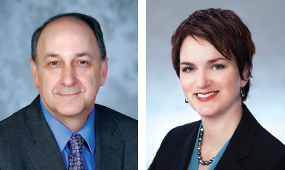Narcissism and Its Discontents

Glen O. Gabbard, M.D., is a clinical professor of psychiatry at Baylor College of Medicine and a training and supervising analyst at the Center for Psychoanalytic Studies in Houston. Holly Crisp, M.D., is a clinical associate professor at Baylor and a faculty member at the Center for Psychoanalytic Studies in Houston. They are the authors of Narcissism and Its Discontents: Diagnostic Dilemmas and Treatment Strategies With Narcissistic Patients, which APA members may purchase at a discount.
The term “narcissism” has seized the popular culture in the last couple of years in a way that few might have imagined 10 years ago. Yet psychiatrists and mental health professionals continue to find the diagnosis of narcissistic personality disorder (NPD) a vexing challenge that produces a good deal of discontent. Does pathological narcissism denote too much self-love? Profound insecurity? Low self-esteem? Too much self-esteem? Selfishness? Aloofness? A conviction that one is smarter, better looking, more fashionable, or better connected than others? Incapable of tuning in to what others are feeling or thinking? Used as an adjective, “narcissistic” may refer to someone who is thoroughly unpleasant and obnoxious, someone who bristles easily and is sensitive to slights, or someone whose success and confidence are envied.
Almost everyone recognizes an attribute such as healthy self-interest as a kind of narcissism that involves self-care and pride in a job well done. Whether a self-serving behavior is pathological or not may depend on other factors, such as the phase of one’s life cycle. An adolescent girl who spends hours obsessing about how she wishes to appear in the photo she is about to place on social media may well be seen as “normal” for her stage in life. However, the same phenomenon in a 48-year-old would raise concern. To complicate matters further, one person labeled “narcissistic” may respond to a slight by having an emotional meltdown, while another with the same label may appear to be impervious to any insult because of his or her apparent self-confidence.
The discontent of clinicians is also linked to the frustration they experience with their attempts to treat narcissistic patients, who may insist on dictating the conditions of treatment, ignore the comments of their psychiatrists, and “correct” their clinicians by indicating to them where they have gone wrong and pointing out what they should say and when they should say it. Moreover, these patients are often frustrating because some disappear from treatment abruptly without explanation. On the other end of the continuum, when these patients stick with treatment, it may be protracted with very little sign of change. Indeed, they may seem impervious to the observations of the clinician who is treating them and yet stay in treatment without making substantial improvements. These treatments may be among the longest and most arduous and may seem interminable.
From the perspective of two psychiatrists who have treated many narcissistic patients over the years, we must conclude that NPD is nothing if not pleomorphic. It is a multi-headed hydra that may present in a variety of ways depending on the idiosyncrasies of the patient and the context in which the patient lives and works. Research suggests that there is a grandiose form of narcissism that fits the criteria of DSM-5, a vulnerable or hypervigilant variant that sees narcissistic injury around every corner, and a high-functioning type whose narcissism may surface only after a considerable period of knowing the person. However, narcissistic issues may also contribute to comorbidity in patients who present with primary mood disorders, anxiety disorders, and substance use disorders.
Hence, treatment must be tailored to the specific narcissistic subtype, the comorbid conditions, and the idiosyncrasies of the person with the disorder. Some narcissistic patients will agree to treatment only if it is on their terms and under their (somewhat omnipotent) control. Still others may quit abruptly when there is a small break in the clinician’s empathy or a confrontation that some of the difficulties in the patient’s life are his or her own responsibility. Fortunately, there are strategies that one can employ to help the patient out of his problems with self-esteem regulation. Some narcissistic patients can rise to the occasion and make substantial changes. There is an unfortunate stereotype that narcissistic individuals create distress in others but do not themselves feel distressed. This aphorism is misguided in that most narcissists feel desperately disappointed that they do not receive the admiration, acclaim, and love that they long for. Psychiatrists and other mental health professionals can help them come to terms with the associated pain and longing. ■



